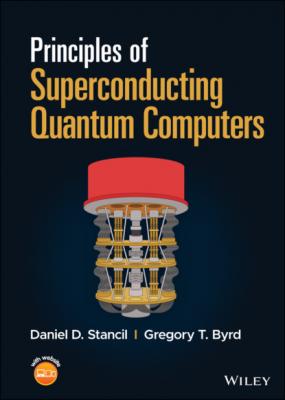Principles of Superconducting Quantum Computers. Daniel D. Stancil
Читать онлайн.| Название | Principles of Superconducting Quantum Computers |
|---|---|
| Автор произведения | Daniel D. Stancil |
| Жанр | Программы |
| Серия | |
| Издательство | Программы |
| Год выпуска | 0 |
| isbn | 9781119750741 |
304 272
305 273
306 274
307 275
308 276
309 277
310 278
311 279
312 280
313 281
314 282
315 283
316 284
317 285
318 286
319 287
320 288
321 289
322 290
323 291
324 292
325 293
326 294
327 295
328 296
329 297
330 298
331 299
332 300
333 301
334 302
335 303
336 304
337 305
338 306
339 307
340 308
341 309
342 310
343 311
344 312
345 313
346 314
347 315
348 316
349 317
350 318
351 319
352 320
353 321
354 322
355 323
356 324
357 325
358 326
359 327
360 328
361 329
362 330
363 331
364 332
365 333
366 334
367 335
368 336
369 337
370 338
371 339
372 340
373 341
Preface
Over the past several years progress in quantum computing technology and algorithms has accelerated rapidly. We believe that Electrical and Computer Engineers have much to contribute to this work, and one of the goals of this book is to help introduce those with ECE backgrounds to this exciting area.
Our interest in quantum computing was initiated by the discussions between NC State and IBM about establishing the IBM Quantum Hub at NC State, and began in earnest in the spring of 2018. During this semester we both sat in on a Computer Science special topics seminar led by professors Frank Mueller and Patrick Dreher. This led to a joint CSC/ ECE special topics course on quantum computing in the fall of 2018 that was team-taught by professors Mueller and Dreher along with one of us (GTB).
As we have delved more deeply into quantum computing over the past several years, we have discovered that most of the rapidly-growing literature is addressed to those with backgrounds in physics, mathematics, and/or computer science, and often assumes a body of shared prerequisite knowledge and terminology that is not typical for Electrical and Computer Engineers. Electrical Engineers studying semiconductor physics do study quantum mechanics, but from a very different perspective. Band theory, effective mass, tunneling, and perhaps the hydrogen atom are covered, but quantum computing involves 2-level systems, state vectors and rotations, Hamiltonians, and unitary operators—topics not normally emphasized in device physics courses. Further, there is very little available in the current introductory literature explaining how the systems operate.
Just as semiconductor physics became a standard component of electrical engineering curricula beginning in the early 1960s, we believe that quantum computing will become integral parts of ECE curricula in the coming decades. The span of ECE covers the entire range of technologies underpinning quantum computing, including device physics and modeling, nanofabrication, RF and optical systems, signal processing, information theory, error correction and coding, transpilers and compilers, system architecture, and algorithms and applications.
At the time of this writing, there are competing technologies for the implementation of quantum computing, including trapped ions, quantum dots, topological structures, and artificial atoms made with superconducting devices. While we believe Electrical and Computer Engineers will be critical to the development of all of these systems, we have chosen in this volume to concentrate on superconducting technologies relying on Josephson junction transmons.
The intended audience is advanced undergraduate students and first-year graduate students in Electrical and Computer engineering. In presenting topics, we have tried to bridge the gaps that we have encountered between the prevailing literature and the backgrounds of Electrical and Computer engineers.
We offer this work not as an exposition by authorities, but rather as an introduction by technological “pilgrims” hoping to help other “pilgrims” along this exciting journey.
D. D. Stancil
G. T. Byrd
Raleigh, NC
Acknowledgments
We are grateful to our colleagues and students at NC State for many helpful conversations that have deepened and clarified our understanding. In addition, we would like to acknowledge helpful comments on portions of the manuscript by J. C. Bardin and N. Earnest-Noble. Of course, any remaining errors are ours.
We would also like to express appreciation to Brett Kurzman, Sarah Lemore, Becky Cowan, and the capable team at Wiley for their assistance and guidance.
About the Companion Website
This book is accompanied by a companion website:
www.wiley.com/go/stancil/principlesofsuperconductingquantumcomputers
